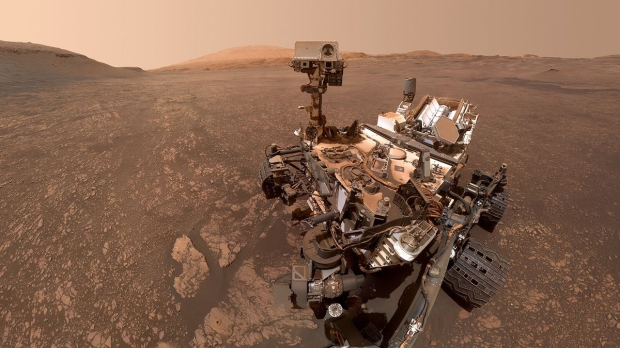Science, Space, Health & Robotics News - Page 1
SpaceX announces Falcon 9 will return to the skies after its critical failure flight
On July 11, SpaceX encountered a critical failure problem on one of its Falcon 9 rockets. The problem resulted in a Rapid Unscheduled Disassembly (RUD) protocol to be initiated, or boom.
SpaceX has taken to its website and X account to share an update on the review process following the failure of a Falcon 9 rocket. Notably, SpaceX's Falcon 9 is the company's workhorse rocket, having already launched 24 times this year and more than 350 times since its debut in 2010. During that time it has only experienced one catastrophic in-flight failure.
However, on July 11, a critical failure occurred during the first burn of Falcon 9's second-stage engine. SpaceX explains a liquid oxygen leak developed within the simulation around the upper stage engine, with engineers later discovering the cause of the leak was a crack in a sense line for a pressure sensor that's attached to the vehicle's oxygen system. The sense line cracked due to "high loading from engine vibration and looseness in the clamp that normally constrains the line."
NASA releases images of the coldest exoplanet ever photographed
NASA has taken to its website to detail newly snapped images of an exoplanet called Epsilon Indi Ab, which the space agency says is one of coldest exoplanets it has observed to date.
An international team of astronomers pointed Webb's extremely powerful infrared instruments at the exoplanet Epsilon Indi Ab, which is approximately 12 light-years away from Earth and within the constellation of Indus. The planet orbits the K-type star known as Epsilon Indi A, which is approximately the same age as our Sun, only slightly cooler. The team used Webb's MIRI instrument, which stands for Mid-Infrared Instrument, to directly image the exoplanet and reveal its interesting properties.
The space agency explains Epsilon Indi Ab is one of the coldest exoplanets to be directly detected, measuring an extremely freezing temperature of 35 degrees Fahrenheit, or 2 degrees Celsius. Notably, Epsilon Indi Ab is the closest planet to Earth that is more massive than Jupiter, and is the twelfth closest exoplanet to Earth known to date.
Continue reading: NASA releases images of the coldest exoplanet ever photographed (full post)
NASA sends 4K video to the ISS faster than you can download games
The average household in the United States enjoys a reasonably fast internet speed of 245 Mbps, which translates to 30 megabytes per second. This kind of internet speed makes light work of new games that weigh 100GB, but what about the internet speeds in space? Or specifically the ISS? How long would it take for astronauts aboard the ISS to download Call of Duty: Modern Warfare?
NASA has recently put its network to the test under the HDTN project, which has successfully streamed 4K UHD video between NASA's PC-12 aircraft, optical ground stations, a satellite, and finally, the International Space Station (ISS). During the test, NASA recorded speeds of more than 900 Mbps or 112.5 megabytes per second.
So, what happened? NASA began testing its network in May by firing lasers from a small single-engine aircraft while it flew over Lake Erie. The target was a ground station in Cleveland, Ohio, which then relayed the 4K video to NASA's White Sands Test Facility. From there, the 4K video was blasted to NASA's Laser Communications Relay Demonstration (LCRD) satellite, which was then sent to the ISS.
Continue reading: NASA sends 4K video to the ISS faster than you can download games (full post)
Hydrothermal explosion rocks Yellowstone causing onlookers to run in panic
Yellowstone National Park sits atop the largest super volcano on the continent, and while it is considered to be a dormant volcano it still causes geological events across the park, such as hydrothermal geysers.
Yellowstone is home to more than half of the world's geysers and contains the tallest active geyser, the Steamboat Geyser, which erupts every 90 minutes. Geyser explosions are commonplace in Yellowstone, but not every day is there a significant explosion caught on video. The large explosion took place in the Biscuit Basin, and reports indicate it was a hydrothermal explosion and (luckily) wasn't a catalyst to awaken the dormant super volcano.
A hydrothermal explosion is a rapid ejection of boiling water, steam, mud, and rock fragments. The event occurs when pockets of fluids rapidly transition to steam, and since vapor particles are much larger than water particles, extreme pressure is placed on the surrounding rocks. Pressure reaching a proverbial "boiling point" and boom. Mud, boiling water, and steam are all launched outwards. The above video shot by visitors at the park shows them running in fear as the explosion is taking place.
Scientists discover 'dark oxygen' and break the theory of human evolution
A team of researchers discovered a new source of oxygen at the bottom of the ocean, and it's discovery has led to more questions being asked than answered.
The discovery was detailed in a new paper published in the scientific journal Nature Geoscience, which explains the new oxygen source is called "dark oxygen," which is likely a reference to dark matter in astronomy as it can be measured but not seen. Much like dark matter, researchers first discovered dark oxygen when they discovered oxygen levels at the seafloor were rising, which would be impossible at depths of 13,000 feet, particularly without any photosynthetic processes.
"When we first got this data, we thought the sensors were faulty because every study ever done in the deep sea has only seen oxygen being consumed rather than produced. We would come home and recalibrate the sensors but over the course of 10 years, these strange oxygen readings kept showing up," said Biogeochemist Andrew Sweetman from the Scottish Association for Marine Science (SAMS)
NASA explains how AI is physically looking for life on another planet
Artificial intelligence (AI) has taken over the tech industry to the point where even someone who isn't interested in the developments of technology has heard the term "AI".
AI, or machine learning, has been around for quite some time but just wasn't a popular engineering term. Nonetheless, developers and engineers have been using machine learning in various ways for many years now, and one industry in particular, space exploration, adopted the technology as soon as it was possible as it enabled rovers and landers to carry out landings and surface movement autonomously.
NASA's Perseverance rover is one of these off-world rovers, and for the past three years, it has been testing out an AI that enables the rover to search for and identify specific minerals and rocks embedded in the surface of Mars. The system uses an instrument called the "Planetary Instrument for X-ray Lithochemistry (PIXL)," which is a spectrometer that uses light to identify the composition of a rock.
Continue reading: NASA explains how AI is physically looking for life on another planet (full post)
Elon Musk believes the Optimus robot could make Tesla $20 trillion richer
During Tesla's annual shareholders meeting company CEO Elon Musk touched on the highly anticipated humanoid robot currently being developed at Tesla, and how much money is expected to be generated from its public release.
The news on Tesla's humanoid robot Optimus has been released in drips and drabs, with the last big update surfacing in December last year when Tesla unveiled its new generation of Optimus robots that introduced a range of improvements compared to its predecessors. Since then, we haven't really got any new information on Optimus besides the shirt-folding video that Musk clarified isn't a representation of what Optimus can do right now autonomously but certainly will be able to do in the future without a specific environment.
Musk has recently touched on Optimus during Tesla's annual shareholders meeting, where he said he expects limited Optimus production to begin in 2025, and the first batch of "thousands" humanoid robots will be moved into Tesla factories to begin work by the end of the year. Musk also said hypothetically, the sales of Optimus robots, which are priced anywhere between $20,000 and $30,000, could increase Tesla's market capitalization by as much as $20 trillion.
Scientists want to build an information superhighway between Earth and the Moon
For space travel to become an affordable reliable form of transportation Earth needs to be able to communicate quickly and efficiently with our destinations, which will be at first then Moon and then Mars.
Establishing a high-speed data network between Earth and the Moon will enable real-time communication, navigation, and monitoring of missions through sending and receiving audio, images, and video. To achieve this, a team of researchers at the China Academy of Space Technology (CAST) and the Beijing Institute of Spacecraft System Engineering proposed a network comprised of 30 satellites and three lunar ground stations.
This network would enable 20 or more travelers to simultaneously communication with Earth in the aforementioned formats. In addition to the communication abilities, the network would also enable researchers to track objects as small as 3 feet in diameter in the region between Earth and the Moon. The project by China is aiming to be rolled out in three stages.
NASA sets world record for fastest human-made object ever built
When you think fast, you typically think of sports cars or the speed of a bullet, but do you ever think about satellites, or more specifically, space probes?
The question as to what is the fastest human-made object can answered by understanding the incredible speed of NASA's Parker Solar Probe, a space probe sent to the Sun to relay data back to Earth about its intense environment and activity. The goal of the Parker Solar Probe is to provide researchers with more information on the evolution of our local star, and since it has been orbiting the Sun, it has been providing vital information about its habits and 11-year cycle.
Parker Solar Probe's Wide Field Imagery for Solar Probe (WISPR) camera passing through a CME
Continue reading: NASA sets world record for fastest human-made object ever built (full post)
SpaceX Starlink satellites sacrificed to Earth's atmosphere after Falcon 9 explosion
SpaceX encountered a problem with one of its Falcon 9 rockets last week when the workhorse launch vehicle didn't reach its intended orbit.
It shouldn't be understated the rarity of a problem with Falcon 9, as the workhorse rocket has launched twenty-four times in just 2024 and more than 350 times since its debut in 2010. During that time it has only experienced one catastrophic in-flight failure, and its lack of failures is what earned its reliability badge.
However, during a launch last week, SpaceX discovered the Falcon 9 was leaking liquid oxygen, which resulted in it being unable to reach the designated orbit for the Starlink satellites and ultimately a RUD protocol being initiated by SpaceX - Rapid Unscheduled Disassembly (RUD), or boom. SpaceX managed to get into contact with some of the Starlink satellites and tried to raise their orbits using the satellite's ion thrusters. Unfortunately, that didn't work, as there was too much atmospheric drag.











